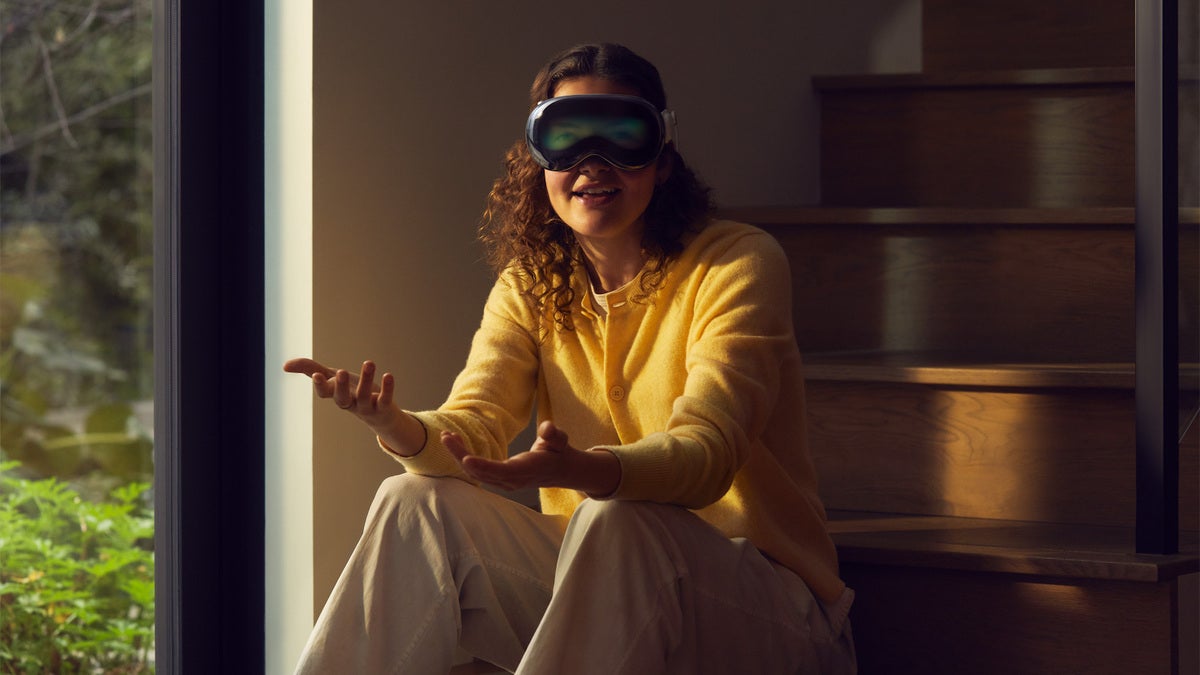I remain convinced that the market is looking for something revolutionary like Apple’s recently announced Vision Pro to replace smartphones, tablets, and PCs. I’m not yet convinced Vision Pro will do that, but it is on the right path. Now that Apple has made a move, rivals will increasingly be in the hunt to see whether they can deliver something better or cheaper (which shouldn’t be that hard.
But head-mounted displays aren’t for everyone, which is why it’s taken so long to get one that at least has the potential to get it right.
The ‘weird factor’
Likely the biggest problem to overcome is the easiest to understand: people don’t particularly like wearing hardware such as eyeglasses or helmets. Sure, they’ll wear dark glasses, but often because they think they look more attractive with them under certain conditions. This suggests that, unlike most of the virtual reality and augmented reality solutions already on the market, Apple knew it needed to make its headset attractive. While it is better than most, the Vision Pro still makes whoever is wearing it look kind of dorky.
The ”how it looks” issue makes it harder for people to envision using the device in public. The fear of looking foolish creates a significant barrier to adoption. This can be overcome with marketing (that places the headset on strong influencers) and new features that will encourage public use and allow people to get comfortable with them. This will require significant heavy lifting.
Productivity gains?
When used for productivity, a head-mounted display or computer needs to work with accessories that allow for data input. Apple’s Vision Pro has three primary user interfaces: eye tracking, hand tracking ,and voice. Eye tracking is relatively mature and should work fine with this device, but hand tracking and voice could be problematic.
Virtual keyboards, which Apple envisions for data entry, don’t have the tactile feedback of a real keyboard and, without physical keys, hand placement can be difficult. And Apple’s voice assistant Siri is vastly inferior to the ChatGPT technology companies have aggressively embraced. My expectation: most users will want both a physical keyboard and a mouse to use with Vision Pro.
One company, Sightful, is already producing something that might be more in tune with market: the Spacetop Laptop. Rather than a screen, it has a head-mounted display. This configuration seems closer to what a person would use for productivity (and even for watching video content) than the Vision Pro. And at $2,000, it costs a fraction of the Vision Pro’s $3,499 price.
Occlusion and transparency
I’ve been using head-mounted displays for a few years, dating back to a $20,000 option Sony designed for medical doctors. They all had the same problem: poor or non-existent occlusion. Typically, with an AR-based rig like the Spacetop, the display and virtual screens are somewhat transparent; that can be fatiguing and distracting because you can see through your work content to what is around you.
Apple’s more-VR-like approach allows for full occlusion. The virtual screens should appear solid, making them arguably better than what Spacetop offers. I expect the perfect product would look like more of a blend between the Apple and Sightful efforts, with the physical keyboard and touch pad of the Spacetop.
Real-world benefits: privacy and fewer distractions
The benefits of a head-mounted display or computer include greater privacy, fewer distractions, more screen real estate — and potentially greater battery life. Head-mounted displays are smaller than typical laptop screens and more energy efficient, particularly when compared to laptops that use power-hungry OLED technology.
The privacy benefit is no small thing. When you’re working remotely, say, on a plane or in a public place, people sitting next to you or just walking by can position themselves to see what you are working on with a normal laptop, even with privacy screens. (Security screens are also energy intensive, and only protect you from side viewing, not from someone reading over your shoulder.
Head-mounted displays and computers, by contrast are more visually secure. Only the user sees the content, so you’re less likely to be embarrassed or compromised with the display on your head.
In addition, with both your eyes and ears covered, you are less likely to be distracted, though Apple’s headset will pause the content and alert you if someone is close by. That could negate some of this focus benefit.
A sign of things to come
I believe head-mounted displays and computers will eventually become our future — once someone gets this right. Apple’s approach appears closer to an entertainment objective than one focused on productivity. Sightful’s version goes the other way; it’s likely better for productivity than for entertainment .
Each device points in the direction of future personal computing, but I expect neither will win. The winning answer will be a blend of Sightful’s approach to the physical user interface and Apple’s use of high-quality hardware. Both will be needed if either solution is to go mainstream.
Apple has opened the door to a revolutionary new way to build personal computers. Now, we wait to see who walks through the door and gets it right.
Copyright © 2023 IDG Communications, Inc.
This story originally appeared on Computerworld

